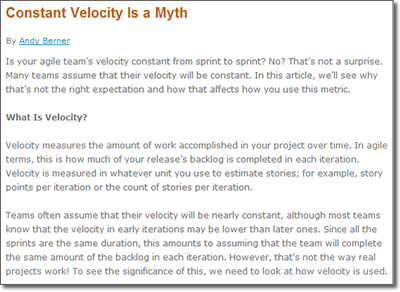Ask Carol: T-Shirt Sizing for Early Software Project Estimates?
Dear Carol:
I work in IT and we do a lot of our software development projects based on pre-defined delivery dates (no one really knows where they come from). Sometimes this works out, but usually we end up delivering the project months late because we had no idea the project was as big or as complex as anyone had originally thought. A friend says his company uses “t-shirt sizing” for software project estimates and I’ve never heard of it. What can you tell me about this new approach?
- I’m willing to learn from the fashion industry
Dear I’m willing:
T-shirt sizing has been around in one form or another for a few years but it is not a widespread mainstream estimating method. It is a quick and dirty way to estimate software size using ranges of size. Once you have the relative size (e.g., XS, Small, Medium, Large, XL, XXL, or larger), you can enter it into several different estimating tools as the size on which to base the estimate. While this doesn’t give you a guaranteed size for the software to be delivered, it is better than not having any idea of the size. Size (scope) is one of the three main tenets of the triple constraints (scope, budget and schedule) for project management. Given one, you can estimate the other two.


